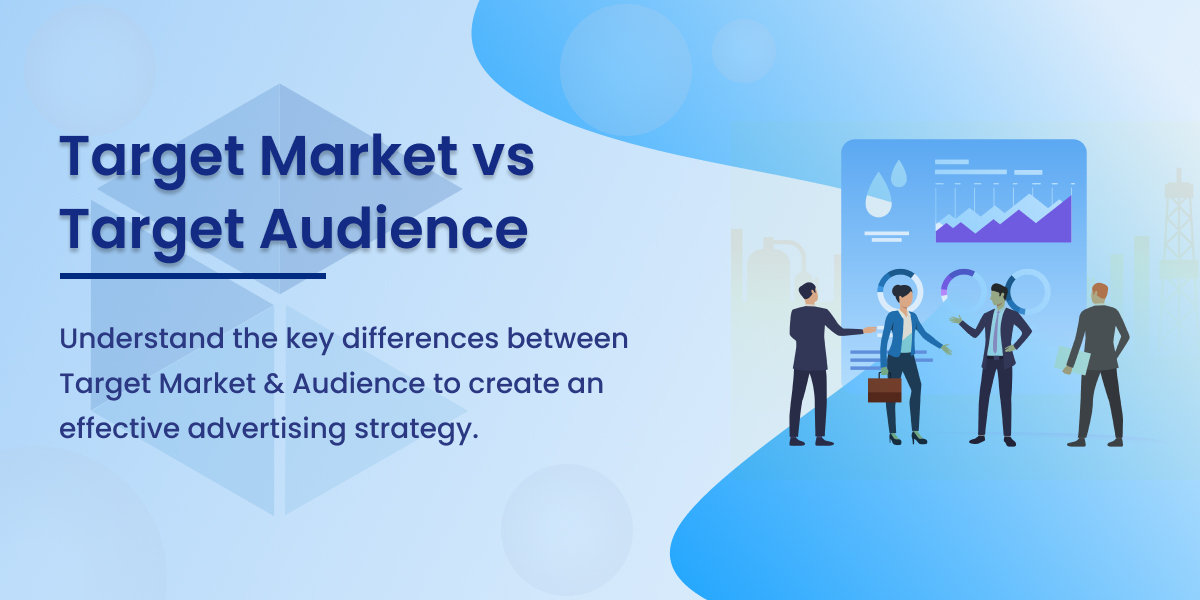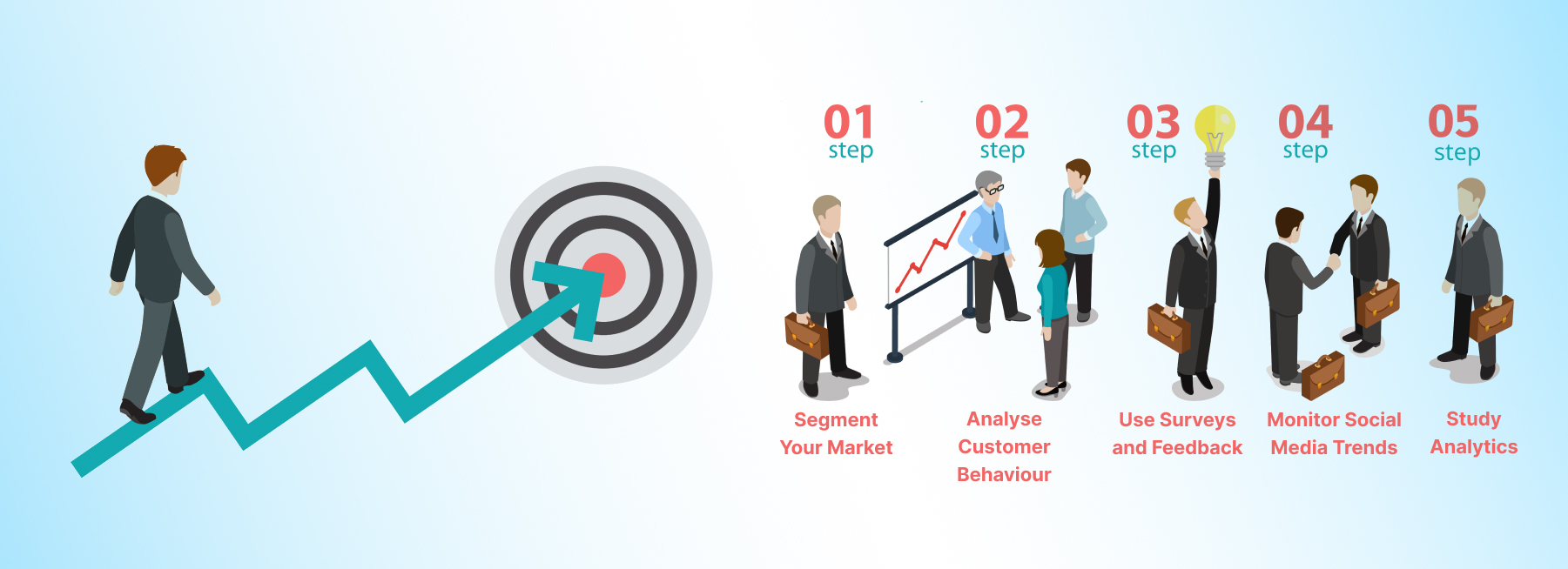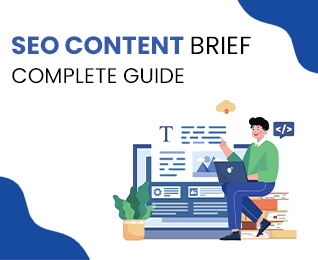
Posted On : 09 December 2023
Knowing your audience is essential in the ever-changing world of digital marketing. Two crucial concepts in this realm are the target market and target audience. While the target market and audience might sound similar, they serve distinct roles in shaping effective marketing strategies.
Delineating Target Market: A Comprehensive Overview of Its Scope and Significance
A target market is a broad group of potential customers identified as the main focus of a marketing strategy. This group shares common characteristics like age, location, or income. Recognising your target market is vital for several reasons:
- Guides Product Development: Knowing who you're creating products for ensures they meet the needs and preferences of this group.
- Shapes Marketing Messages: Tailored messages resonate more with a specific group, increasing engagement and response rates.
- Improves Resource Allocation: By focusing on a specific target market strategy, you allocate resources more effectively, enhancing ROI.
The Concept of Target Audience: A Closer Look at Its Specificity and Application
A target audience, on the other hand, is a more specific subset of your target market. This group is identified for particular marketing campaigns or messages. For instance, within a target market of young adults, a target audience could be college students interested in affordable tech gadgets.
Recognising your target audience helps in:
- Creating Focused Content: Content tailored to a specific audience drives better engagement.
- Selecting Appropriate Channels: Knowing your audience guides you to the right platforms for your marketing efforts.
- Enhancing Customer Experience: Personalised experiences build stronger connections with your audience.
Distinguishing Between Target Market and Target Audience
Comparing these two concepts highlights their differences:
- Scope: The target market has a broader scope, while the target audience is more focused.
- Application: The target market guides the overall business strategy, whereas the target audience is crucial for specific campaigns.
- Customisation: Messages for a target audience are more customised than those for a target market.
Read More – SEO Company in Singapore
Strategies for Identifying Your Target Market: Steps and Best Practices
Identifying your target market involves several steps:
- Analyse Your Offerings:
- Identify the problems your products or services solve.
- Determine who benefits most from these solutions.
- Conduct Market Research:
- Use surveys, interviews, and data analysis to understand potential customers.
- Analyse trends and patterns in customer behaviour and preferences.
- Observe Competitors:
- Study your competitors' target markets.
- Seek out any vacant or untapped markets.
- Develop a Target Market Profile:
- Document characteristics like age, location, income, and lifestyle.
- Use this profile to guide marketing strategies.
- Evaluate and Adjust:
- Regularly review your target market.
- Adjust your strategies as your market evolves.
Best Practices in Target Market Identification
To effectively identify your target market, consider these best practices:
- Use a Mix of Data Sources: Combine quantitative data (like surveys) with qualitative insights (like customer interviews).
- Stay Customer-Focused: Always prioritise the needs and preferences of potential customers.
- Be Flexible: Be ready to adapt to your target market as new trends and customer behaviours emerge.
- Collaborate Across Departments: Involve different teams (like sales and customer service) for a well-rounded understanding of your market.
Techniques for Pinpointing Your Target Audience

A vital first step in developing a successful target market strategy is determining who your target market is. It entails being aware of the demands, tastes, and habits of your ideal clients. Here's how you can accurately pinpoint your target audience:
- Segment Your Market: Start by breaking down your market into smaller groups. Look at factors like age, location, income, and interests. This helps in creating a more focused approach.
- Analyse Customer Behaviour: Pay attention to how customers interact with your brand. What are their buying habits? Which products do they prefer? This insight is invaluable.
- Use Surveys and Feedback: Direct feedback from customers can reveal a lot about your audience. Surveys and feedback forms are great tools for this.
- Monitor Social Media Trends: Social media platforms are goldmines for audience research. Look at the discussions, preferences, and trends relevant to your brand.
- Study Analytics: Website and social media analytics can provide detailed information about your audience, like their demographics, online behaviour, and engagement patterns.
Integrating Target Market and Audience Insights into Your Marketing Strategy
Including these insights into your marketing plan is the next step once you have an accurate grasp of your target market and audience. This guarantees that the demands and preferences of your target audience are met by your marketing initiatives.
- Tailor Your Messages: Customise your marketing messages to resonate with your target audience. This personal touch can significantly increase engagement and conversion rates.
- Choose the Right Channels: Different audiences have different preferred platforms. Choose the channels where your audience is most active.
- Measure and Adapt: Continuously measure the effectiveness of your strategies and be ready to adapt. This agility is key in responding to changing audience needs.
Challenges and Considerations in Target Market and Audience Identification
Identifying your target market and audience is not without its challenges. One major challenge is the dynamic nature of consumer behaviour. Preferences and trends can change rapidly, making it essential to stay updated. Another consideration is the balance between specificity and appeal. You want to be specific enough to be relevant but not so narrow that you miss out on potential market segments.
Read More - Cloaking in SEO
Future Trends in Market and Audience Segmentation
The digital landscape is constantly evolving, and so are the techniques for market and audience segmentation.
- Increased Use of AI and Machine Learning: These technologies are becoming more sophisticated in predicting consumer behaviour and preferences.
- Greater Emphasis on Personalisation: Consumers expect more personalised experiences, and brands will need to adapt to this expectation.
- Integration of Offline and Online Data: Combining these data sources can provide a more comprehensive view of the target audience.
Conclusion
For your marketing efforts to be successful, you must comprehend your target market and audience. It gives you the ability to develop more effective, audience-relevant marketing tactics. This understanding is a continuous process rather than a one-time endeavour. Your strategy should change along with the marketplace. You can make sure that your marketing activities remain relevant and successful by remaining knowledgeable and flexible.
Related Blogs

Posted On : 11 December 2024
SEO Content Brief - Complete Guide
Think of trying to make a sandwich without knowing what goes where. You might slap....

Posted On : 30 November 2024
B2B Content Marketing Tips For 2025
Content marketing transforms the way businesses attract and connect with their audience...

Posted On : 09 May 2020
Reach The Right Audience Using Digital Marketing
Any company that wishes to progress and grow will have to employ digital marketing methods. The market has moved to the online world...
